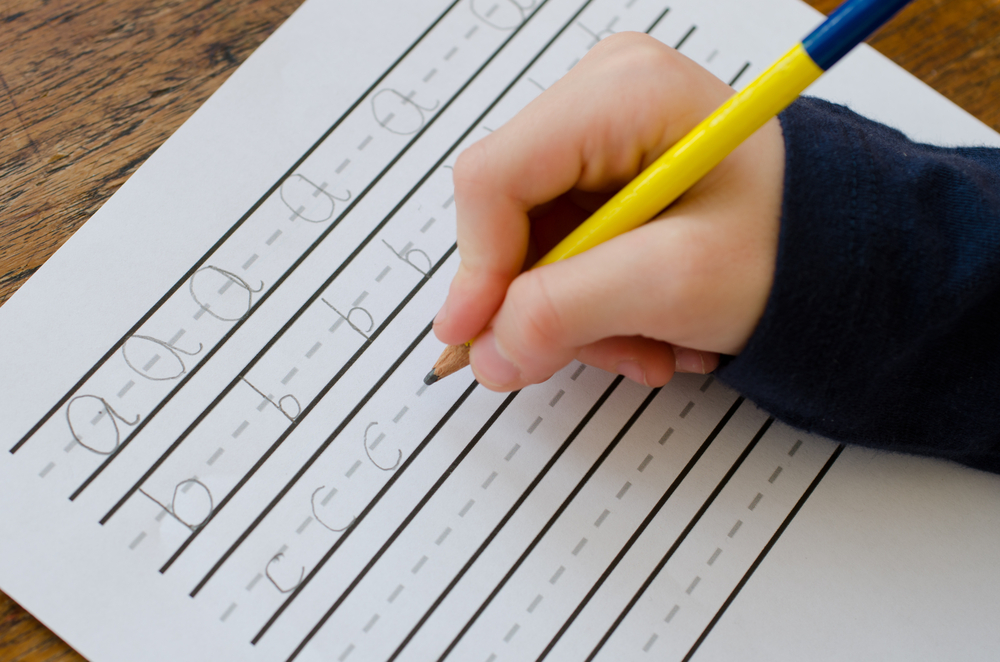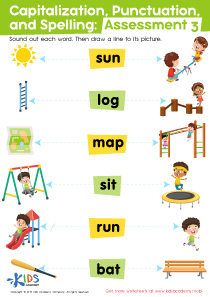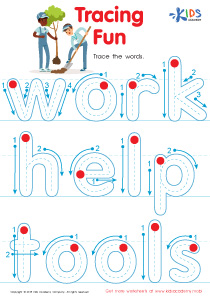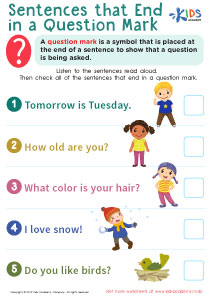Fine motor skills development Cursive Writing Worksheets for Ages 3-8
12 filtered results
-
From - To
Enhance your child's fine motor skills with our expertly designed Cursive Writing Worksheets for ages 3-8! These engaging worksheets are tailored to develop precision and control through fun, age-appropriate activities. By tracing and practicing cursive letters, young learners not only improve their handwriting but also sharpen their fine motor skills, essential for everyday tasks. Perfectly suited for preschool and elementary-aged children, our worksheets provide a structured approach while keeping learning exciting. Empower your child’s writing journey and ensure a strong foundation in essential motor skills with our comprehensive resources. Download now and blend education with creativity!
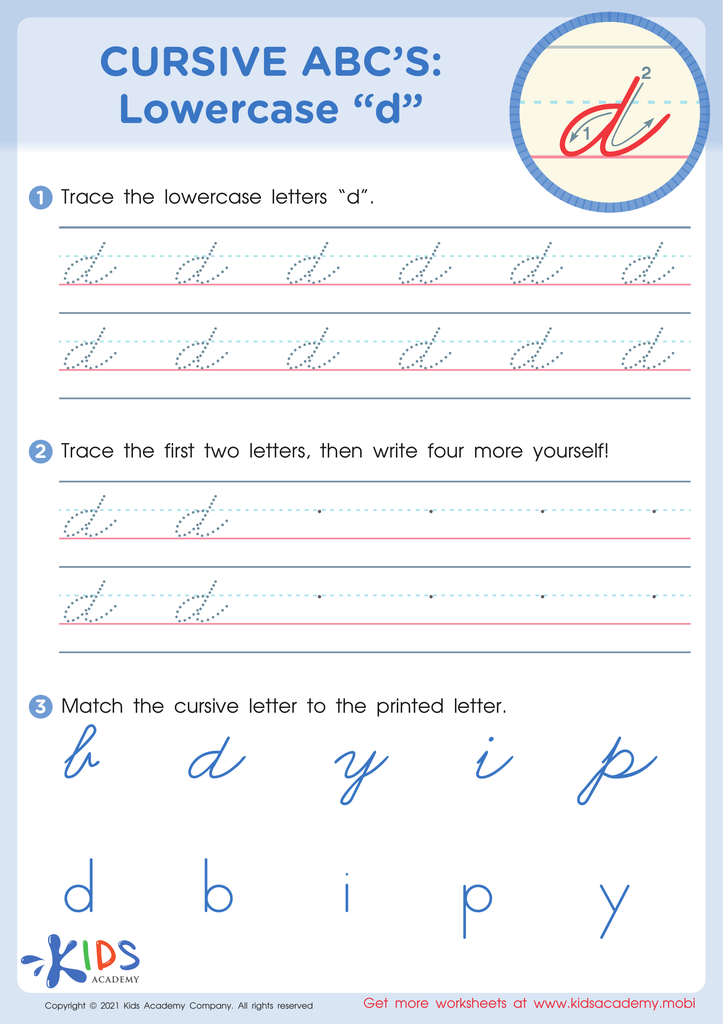

Cursive ABCs: Lowercase d
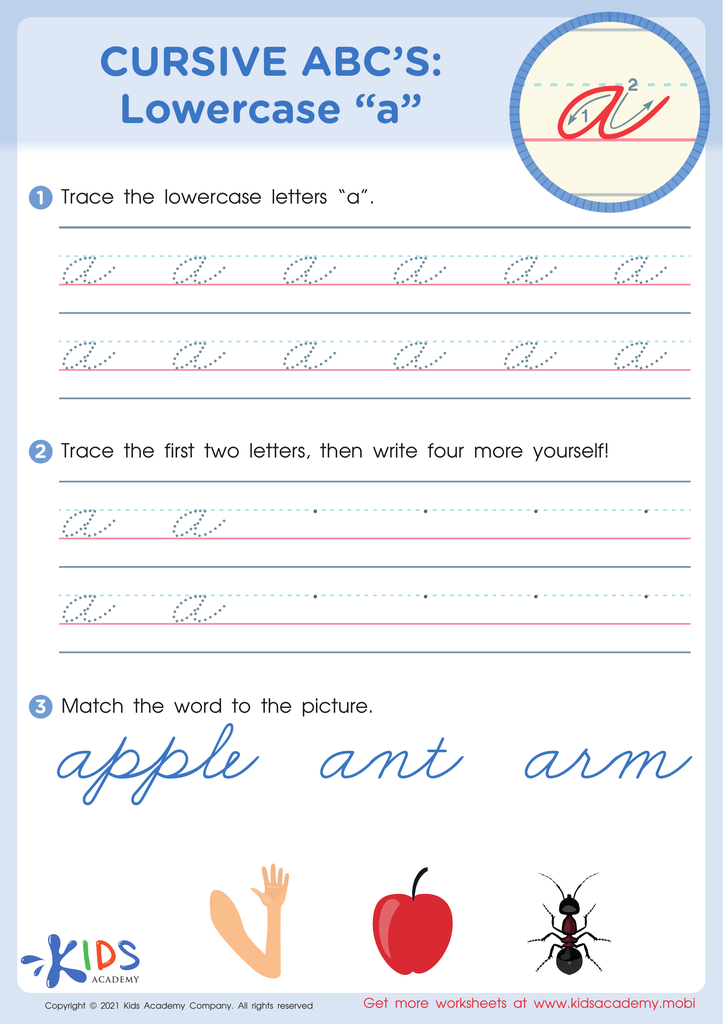

Cursive ABCs: Lowercase a
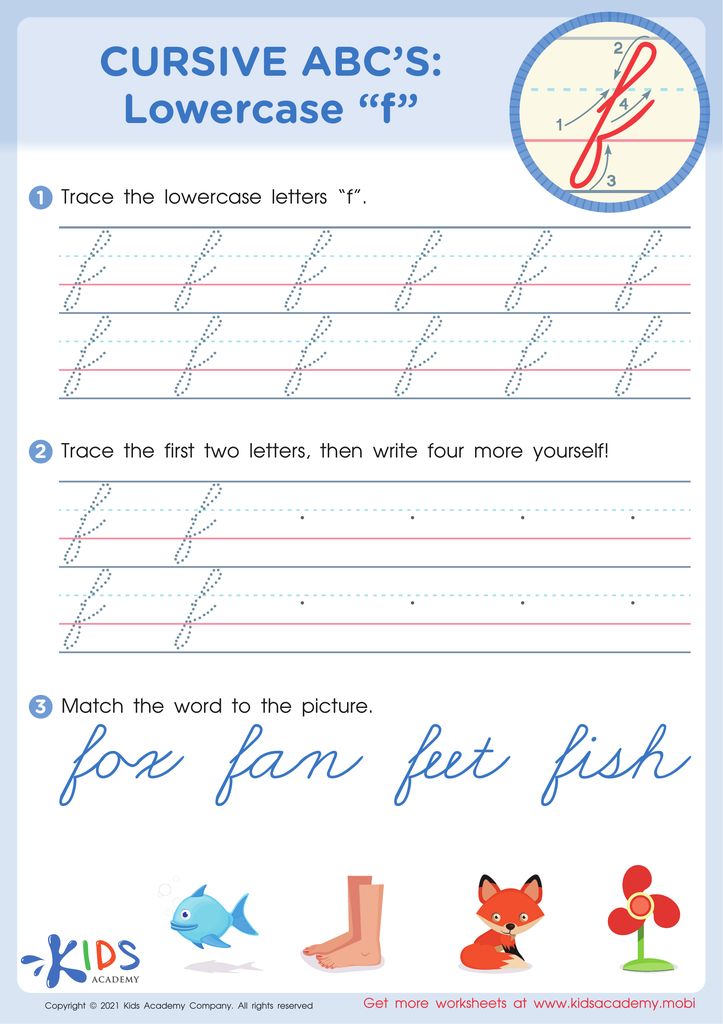

Cursive ABCs: Lowercase f
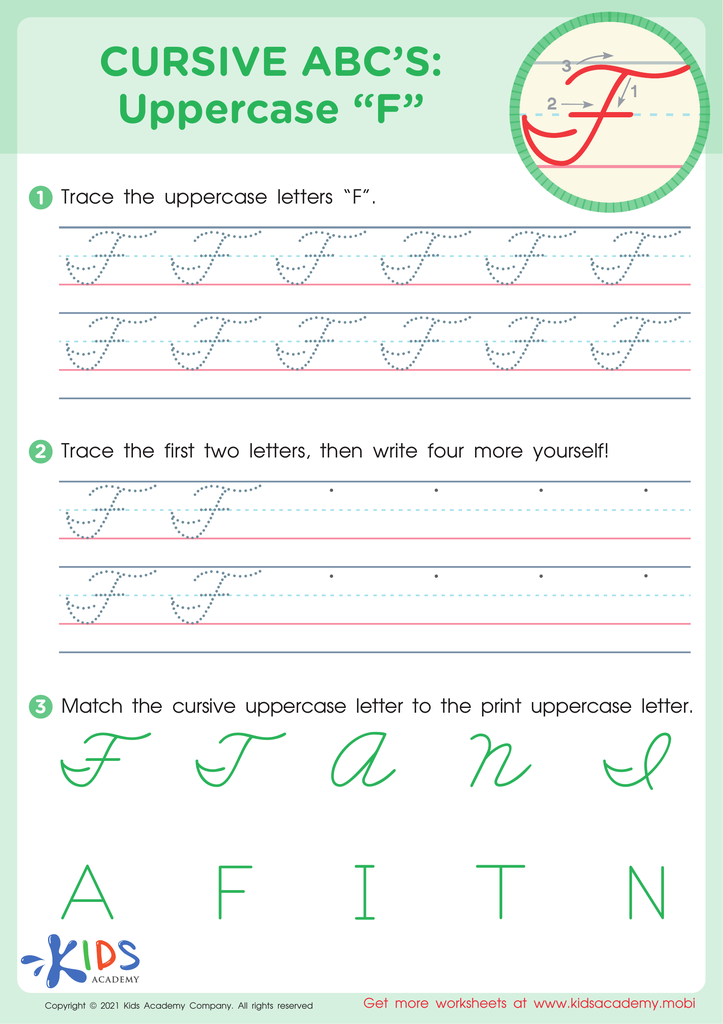

Cursive ABCs: Uppercase F


Cursive ABCs: Uppercase G
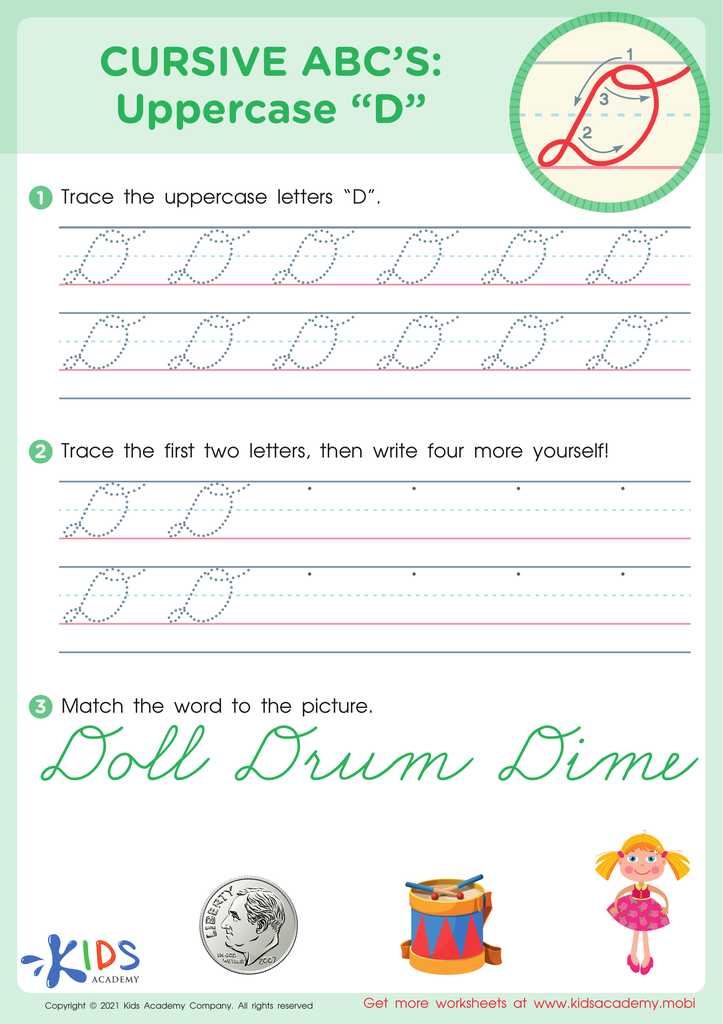

Cursive ABCs: Uppercase D
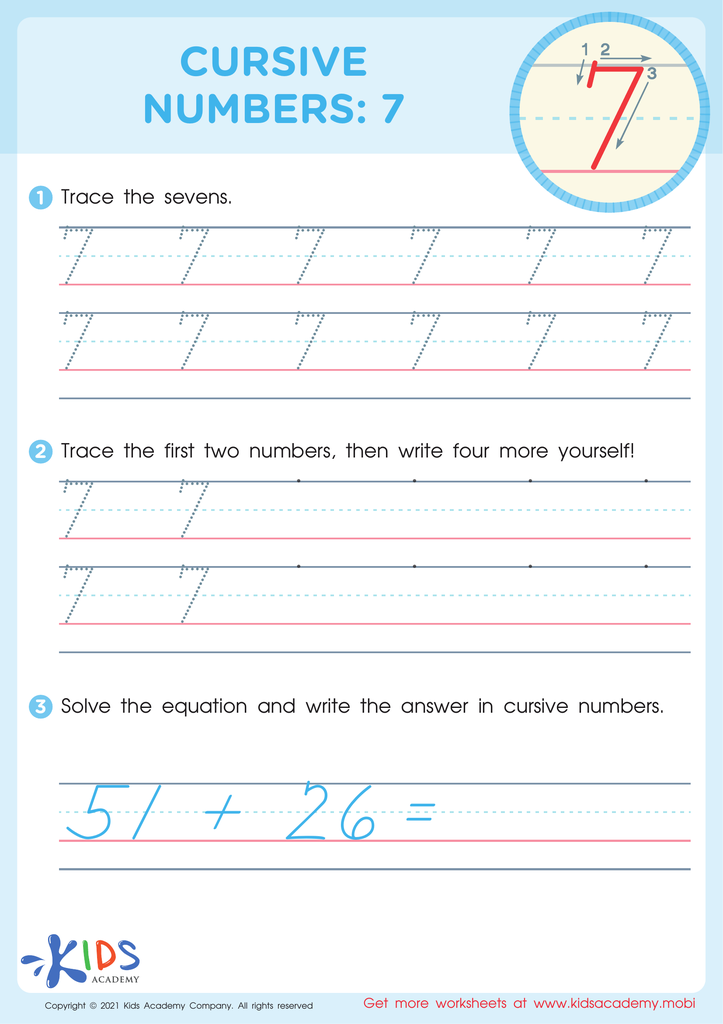

Cursive Numbers: 7 Worksheet
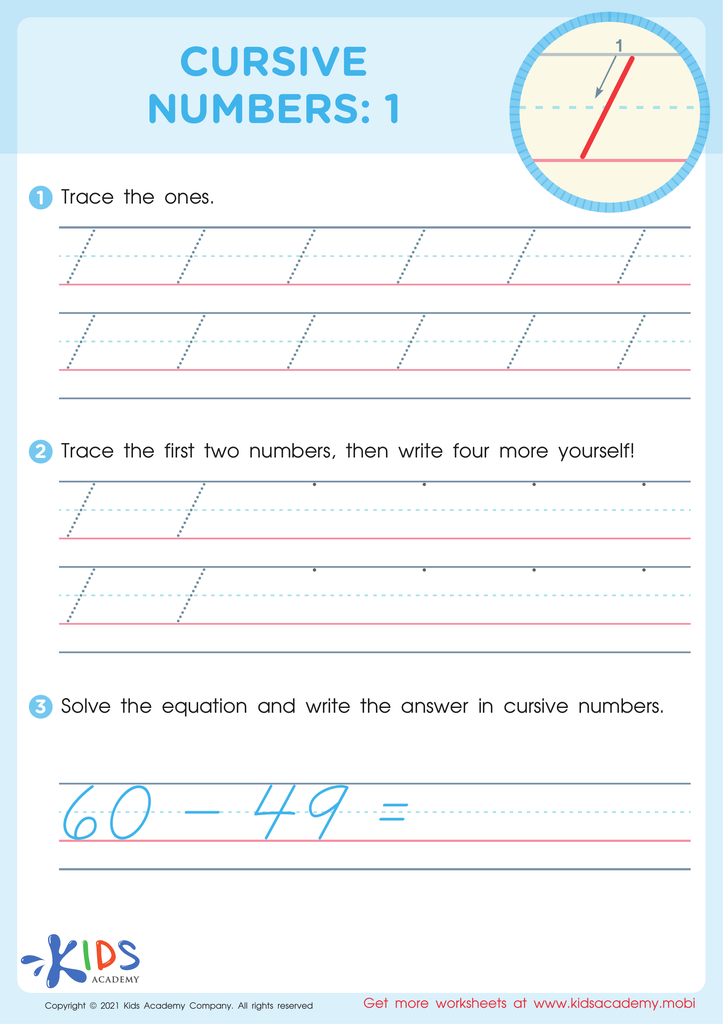

Cursive Numbers: 1 Worksheet
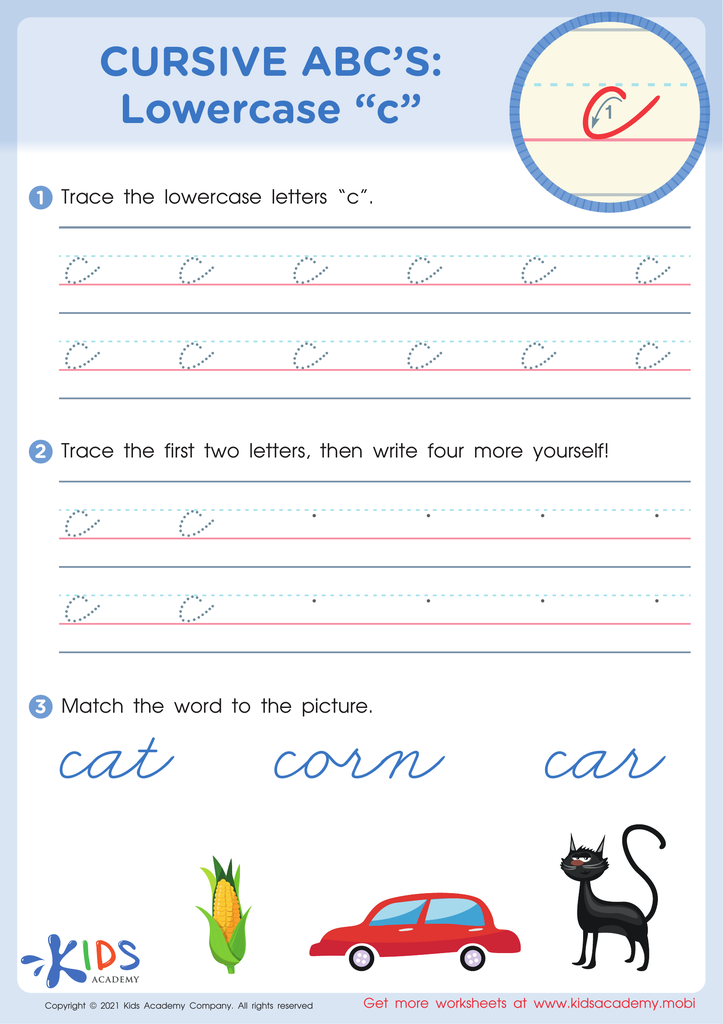

Cursive ABCs: Lowercase c
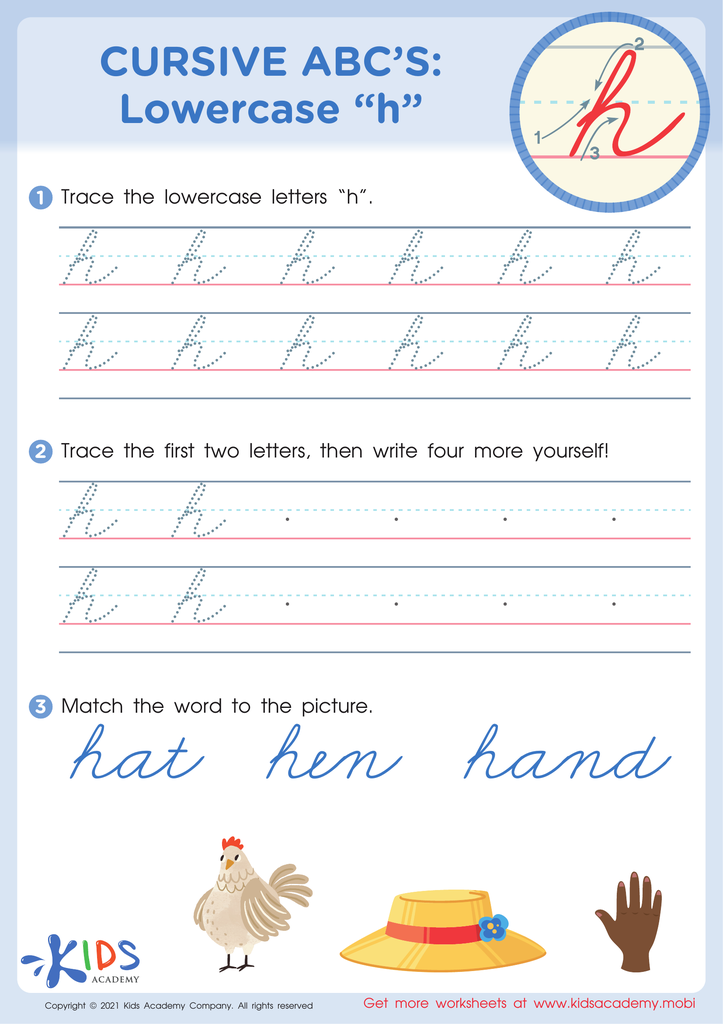

Cursive ABCs: Lowercase h


Cursive ABCs: Lowercase b
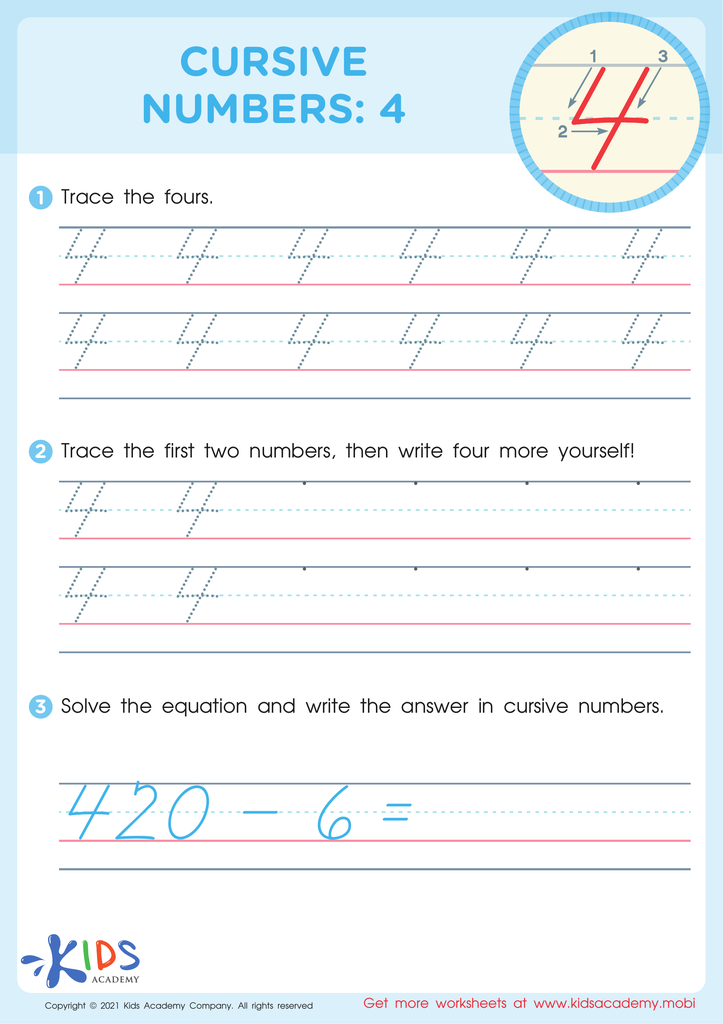

Cursive Numbers: 4 Worksheet
Fine motor skills development is essential in early childhood because it lays the groundwork for a multitude of daily activities and academic tasks, which significantly impact a child's autonomy and confidence. Writing in cursive from ages 3-8 can enhance these crucial skills. The act of forming continuous, flowing letters requires coordinated hand and finger movements that strengthen the small muscles and improve hand-eye coordination. This directly translates to other manual dexterity tasks such as manipulating buttons, zippers, and tying shoelaces, which foster independence.
Additionally, cursive writing aids in cognitive development. The fluid motion of cursive increases brain activity and helps with retention and comprehension of information, leading to better performance in reading and writing. It also supports the development of fine motor skills by refining hand control and dexterity, benefits that spelling and forming shapes boost further.
For teachers, encouraging fine motor skills through cursive writing means students are more prepared for school challenges, from handling tools like scissors to constructing legible, coherent written expressions. For parents, supporting this indicates investing in their child's self-sufficiency and education. Both groups should view it as pivotal, nurturing a blend of cognitive, motor, and literacy skills vital for holistic development.





